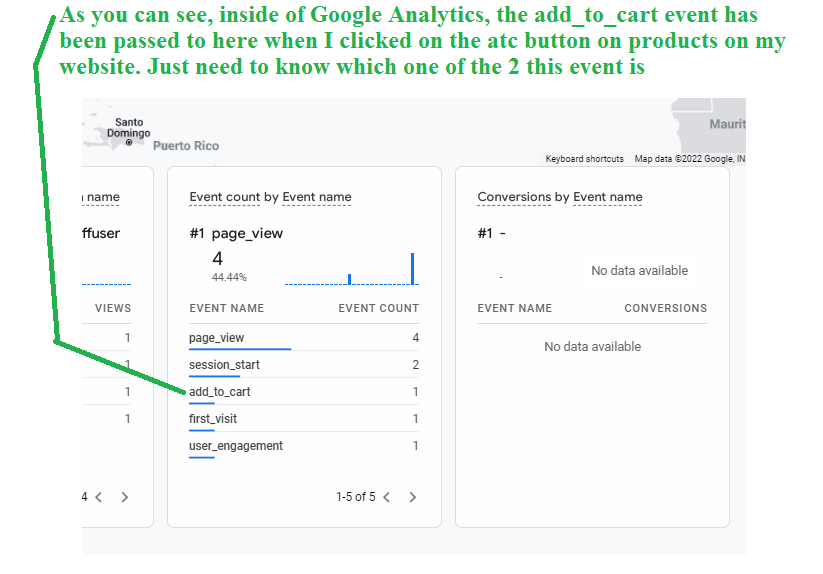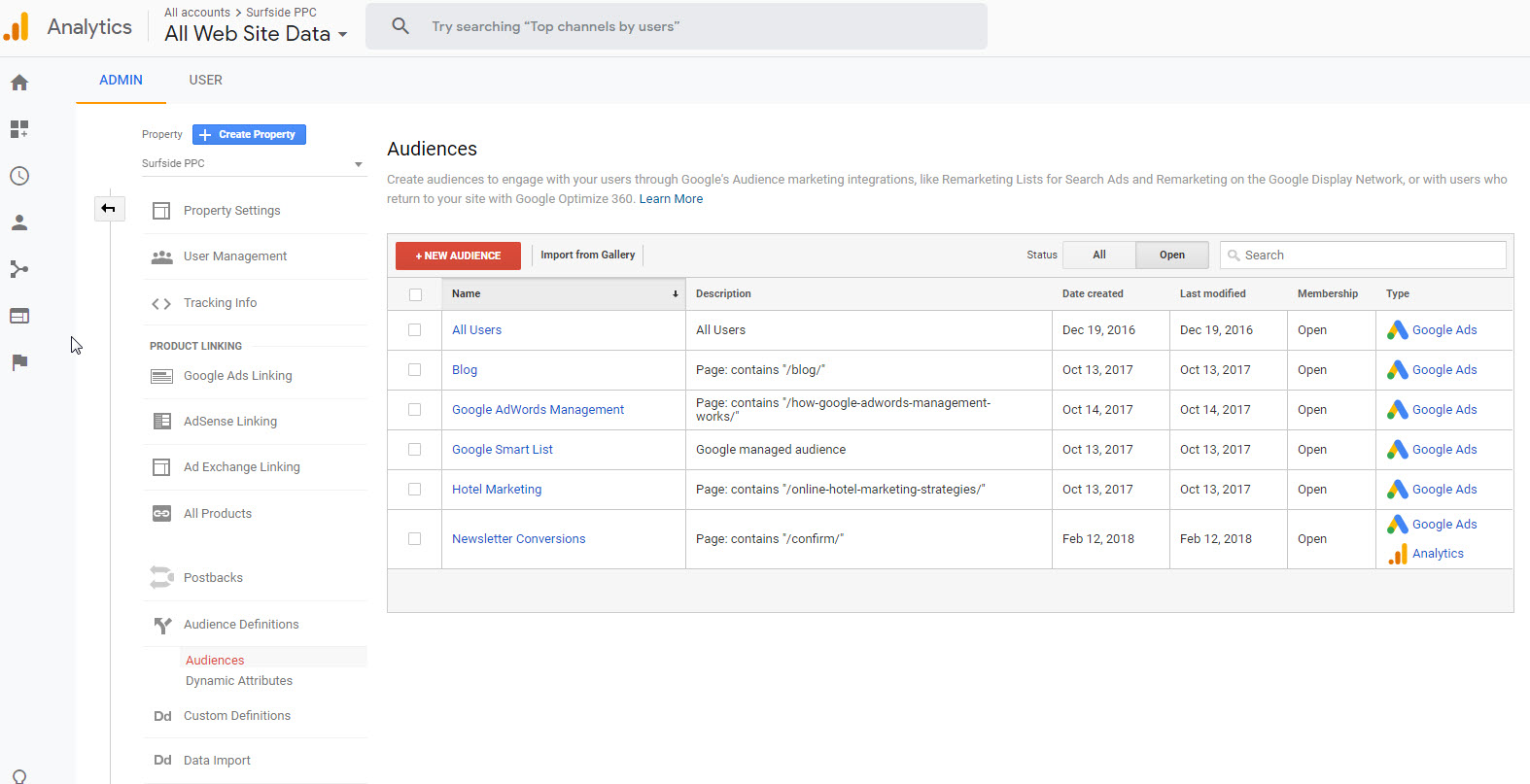Advanced Techniques for Remarketing In Google Analytics
Advanced Techniques for Remarketing In Google Analytics
Blog Article
Efficient Techniques for Remarketing in Google Analytics
In the world of digital advertising and marketing, the world of remarketing in Google Analytics stands as a critical tool for organizations intending to enhance their online existence and conversion prices. Via critical target market division, tailored remarketing checklists, and appealing ad creatives, businesses can craft individualized campaigns that reverberate with their target audience. The real success exists in the capability to continuously improve and enhance these approaches based on performance metrics and information insights. By discovering the nuances of vibrant remarketing and leveraging advanced monitoring tools, services can unlock the full possibility of their remarketing efforts, bring about enhanced brand name presence and consumer engagement.
Audience Segmentation
Using target market segmentation is a critical approach in optimizing the efficiency of remarketing projects within Google Analytics. By separating your audience into unique groups based on their behavior, demographics, or rate of interests, you can customize your marketing messages to be much more pertinent and interesting. This approach enables you to supply tailored ads to specific sections, raising the probability of conversion.

In addition, audience division assists you comprehend the varying requirements and choices of various client teams, permitting you to craft even more compelling ad creatives and deals. This targeted approach not only boosts the performance of your remarketing efforts but also boosts total campaign performance.
Establishing Remarketing Listings
To efficiently implement remarketing strategies in Google Analytics, the first step involves developing targeted remarketing listings based on certain audience communications. Establishing up remarketing lists allows marketers to sector their web site visitors right into different groups based on their actions, such as pages viewed, items searched for, or activities taken on the website. By defining these sections, online marketers can then produce appropriate and tailored ads that target these details groups, raising the possibility of conversion.
Remarketing checklists can be set up using various requirements such as web page brows through, period of visit, details goal completions, and even particular occasions triggered on the site. This degree of modification allows marketers to customize their advertisements to match the interests and preferences of each segmented audience, causing greater engagement and conversion prices.
In addition, remarketing listings can likewise be developed based upon information imported from various other resources like CRM systems, permitting much more accurate targeting. By establishing up these targeted remarketing listings, marketing experts can successfully reach out to possible consumers that have actually already revealed rate of interest in their items or solutions, making the most of the effect of their remarketing campaigns.
Creating Engaging Ad Creatives
After segmenting website visitors right into targeted remarketing lists based on specific audience interactions, the following essential step is to craft compelling advertisement creatives that reverberate with each fractional team's choices and rate of interests. The performance of remarketing campaigns greatly relies upon the capacity of these ad creatives to catch the interest of the audience and drive them to take the desired action.
To develop engaging advertisement creatives, it is important to recognize the one-of-a-kind features of each fractional group (What Is “Remarketing” In Google Analytics?). Tailoring the messaging, visuals, and uses to line up with the rate of interests and choices of the audience can dramatically enhance the possibilities of conversion. Utilizing vibrant ads that automatically readjust material based on the customer's habits can likewise enhance the customization of the ad experience

Surveillance Performance and Optimization
Reliable monitoring of project performance and continuous optimization are important aspects of effective remarketing approaches in Google Analytics. To make sure the effectiveness of remarketing projects, marketing professionals should frequently track vital performance metrics such as click-through prices, conversion prices, and return on ad invest. By monitoring these metrics, marketing professionals can gain useful understandings into the performance of their projects and identify areas for enhancement.
In Google Analytics, marketers can take advantage of devices like conversion monitoring and target market segmentation to examine the efficiency of their remarketing projects. Conversion tracking allows online marketers to track certain activities that users take after clicking on a remarketing ad, supplying useful information on the effectiveness of the campaign in driving desired outcomes. Audience segmentation, on the other hand, allows marketing experts to divide their audience into different segments based on various standards such as demographics, habits, and rate of interests, enabling more targeted and customized remarketing efforts.
Continuous optimization is vital for making the most of the impact of remarketing campaigns. Marketers ought to use A/B testing to experiment with different ad creatives, messaging, and targeting strategies to recognize one of the most reliable strategies. By consistently examining campaign performance information and making data-driven optimizations, marketing experts can make certain that their remarketing projects are accomplishing the preferred results and driving conversions properly.
Leveraging Dynamic Remarketing
Making use of vibrant remarketing can substantially improve the relevance and impact of targeted advertisements in Google Analytics. This advanced method allows marketers to reveal individualized ads to customers that have formerly visited their site or utilized their mobile application. By dynamically presenting product and services that the customers have actually shown rate of interest in, dynamic remarketing helps to maintain the brand fresh in their minds and urges them to go back to complete a purchase.

In addition, vibrant remarketing projects can be automated and optimized in real-time based on efficiency data, ensuring that the ads stay reliable and appropriate. By leveraging vibrant remarketing in Google Analytics, advertisers can develop extra impactful and targeted ad campaign that resonate with their audience and drive outcomes.
Verdict
To conclude, reliable remarketing approaches in Google Analytics entail target market division, targeted remarketing lists, compelling ad creatives, performance monitoring, and vibrant remarketing. By concentrating on customized ads, data evaluation, and constant optimization, companies can increase conversion prices and drive interaction effectively. Leveraging devices like conversion tracking makes certain that advertisements remain appropriate and customized, resulting in overall success in remarketing initiatives.
With strategic audience segmentation, customized remarketing listings, and interesting ad creatives, businesses can craft personalized her response campaigns that resonate with their target audience. Using vibrant advertisements that instantly readjust material based on the user's behavior can also boost the customization of the advertisement experience.
Conversion tracking enables marketing experts to track certain actions that customers take after clicking on a remarketing advertisement, offering important data on the effectiveness of the project in driving preferred results.Making use of dynamic remarketing can significantly improve the relevance and effect of targeted ads in Google Analytics - What Is “Remarketing” In Google Analytics?.In conclusion, efficient remarketing strategies in Google Analytics include target market division, targeted remarketing listings, compelling advertisement creatives, performance monitoring, and vibrant remarketing
Report this page